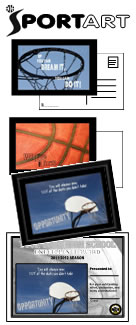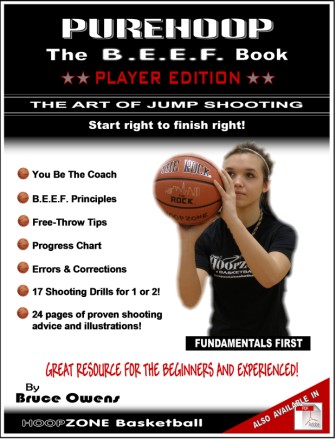For youth ages 8-11 (grades 3-6) xxxxxxx7 PLAYS
Teaching an offensive set to youth in grades 3-6 (ages 8-11) can be very challenging for a number of reasons. Most kids still lack the fundaments and adding an offense set that says “go here” and “go there” makes little sense to them.
No competitive offense will function well without each player being able to understand their role of playing both with and without the ball, keeping good floor spacing for the players, making good and timely passes, dribbling with control, able to finish at the basket, rebound, shoot, and play man defense. Having 5 players on the floor that can do all these things well, at this age, seems a stretch, much less to run some kind of fancy offense.
Many youth camps/leagues are typically disorganized when it comes to running an offense, thus resulting in little to no scoring. Offensive plays can often be very hard to master, making them near impossible to teach to players of vary skill levels. The best practice for coaching youth league offensive basketball is to focus on fundamental skills.
When one player has the ball, the other four teammates should be spaced and moving with a purpose without the ball. This means cutting to the basket for a pass, screening away for another player or moving to balance the floor. This is continuous motion, and when the player with the ball passes, that player also joins the purposeful movement.
The player with the ball is looking to pass, shoot or attack the basket. On offense, it's an unending cycle of cuts, screens and floor balance movement. If you teach these things to a 9 or 10 year-old, with everyone moving purposefully, in unison, you have offense.
I have consistently stated that I think 8 to 11 year-olds need to be taught fundamentals, how to move without the basketball, in a simple offensive set. Here you will find our offense sets for this age group to be very simple. Each of our plays will have a suggested age grouping at the top of each plays. The simplest of plays can still be used with an older group.
Simple sets shown below:

Teaching the 4 and 5 players how to move in tandem and in opposition is key in all three sets. It’s also important that players understand how to get to their starting areas from the transition and how to get the offense started without having to stop and set it up.
In all three sets, the first pass will usually be to one of the wings or to a high post. Movement off of this initial pass is crucial to creating the flow of offensive action.
You have multiple starting options, player movements, cuts and screens available, with any of the sets. As an example, from the 1-2-2 you could have player 5 break from low post to high post, creating a 1-3-1, or both 4 and 5 breaking high to create a 1-4, just to start the offense. These are simplified examples for where these sets could develop into some kind of continuity or set play offense
GREAT YOUTH OFFENSIVE PLAYS
GIVE AND GO, use against a man2man
SCREEN AWAY, use against a man2man
PICK AND ROLL, use against a man2man
FLASH, use against a zone or man2man
PLAY #1, use against a man2man
PLAY #2, use against a zone or man2man
PLAY #3, use against a man2man
OVERLOAD, use against a zone
HIGH POST, use against a zone or man2man
SHALLOW, coming
1-3-1 CUT, coming
|





